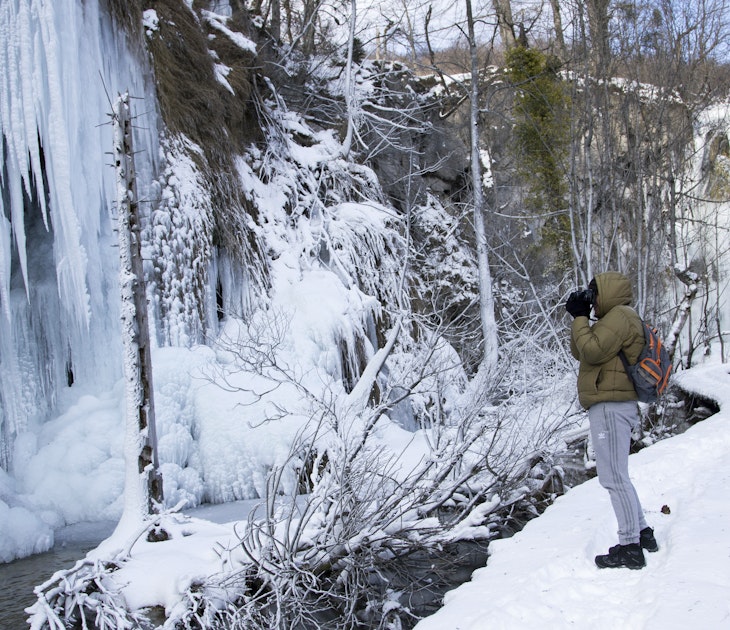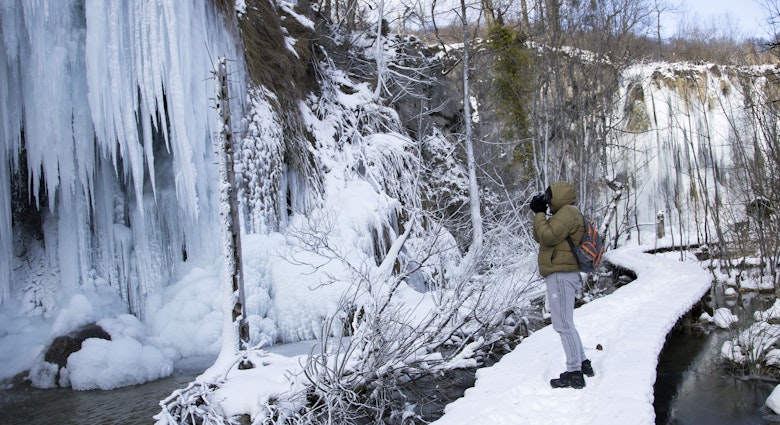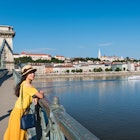Thanks to plentiful buses, boats, trams and Metro trains, getting around Budapest is easy. The Hungarian capital is highly walkable, and for the times when you need to go further afield or get somewhere quickly, there are plenty of options.
Budapest Közlekedési Központ (BKK) runs the city’s transport network, which includes metro lines, trams, buses and even boats in the summer. BKK has a handy app for journey planning, so you can see when the next bus, tram, boat or metro is scheduled to arrive – it's particularly useful in winter, when temperatures regularly drop below -1°C (30°F).
Whatever time of year you come, here are the best ways to get around Budapest.
Pick up a travel card or transport pass for cheap journeys in Budapest
On Budapest public transport, you can buy a ticket for a single journey or buy a travel pass valid for anything from 24 hours to a month, covering all forms of public transportation run by BKK. Prices start at 2500 HUF for 24 hours. The Budapest Card also includes travel on public transport, as well as free entry to sights and attractions; it costs from €29 for 24 hours.
You can buy tickets for public transport from ticket offices in metro stations or at the purple self-service ticket machines at most metro, bus and tram stops. If you get a single ticket, make sure you validate it when you enter the metro station or get on board the bus or tram.
Keep the ticket with you until the end of the journey. Ticket inspectors tend to work undercover, dressed as normal passengers until the purple armband goes on, and there are steep fines if you don't have a valid ticket (the fine doubles if you can't pay on the spot). Other than when changing metro lines, tickets cannot be used for transfers.
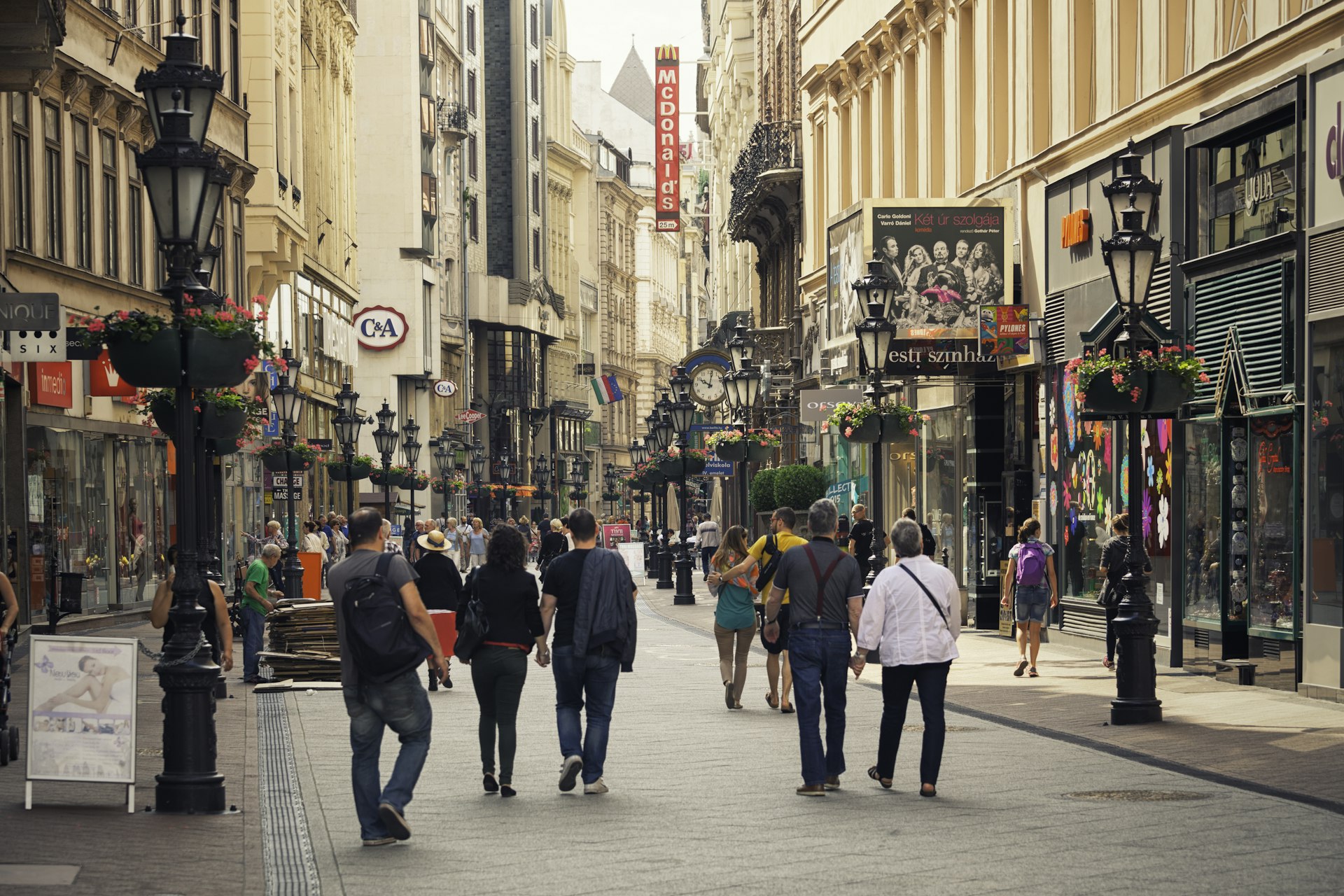
Walking is the best way to see Budapest's gorgeous architecture
Walking is by far the best way to explore Budapest. It’s not the fastest way to get around the city, but it's certainly the most enjoyable. A walk through the backstreets of Budapest could lead to the discovery of your new favorite cafe, and every stroll feels like a spontaneous tour of beautiful Budapest architecture.
Budapest is a safe city to walk in, but be aware that bikes and pedestrians share the same paths on some sections of the Danube Banks, particularly in Buda, so watch out for cyclists.
Biking around Budapest is easy and inexpensive
Budapest is a very cycle-friendly city. You’ll find bike paths crisscrossing the center and winding through the outer districts, with the Danube-side cycle paths in Buda being some of the most popular routes for visitors.
It’s easy to rent a bike in Budapest; just look out for the green stations of the MOL Bubi bike-sharing scheme. You can rent bikes easily and cheaply using the app, with costs starting at 40 HUF per minute; when you’re done, simply return the bike to one of the many bike stations dotted around the city to stop the meter.
Zip around Budapest on the metro
The metro is the quickest way to get around Budapest, and it comes into its own during the frosty winter months. There are four metro lines, with Metro Line 1 (also known as the Yellow Line) being the oldest underground railway in continental Europe – and a Unesco World Heritage Site.
Metro line 1 runs from Vörösmarty tér to City Park, below Andrássy Avenue. Metro Line 2 (red) goes from Déli pályaudvar in Buda to Örs Vezér tér in Pest. Line 3 (blue) crosses Pest from north to south, but the line seems to be in a state of permanent construction, so you may need to get a replacement bus. The gleaming modern Line 4 (green) goes from Keleti train station to Kelenföld train station.
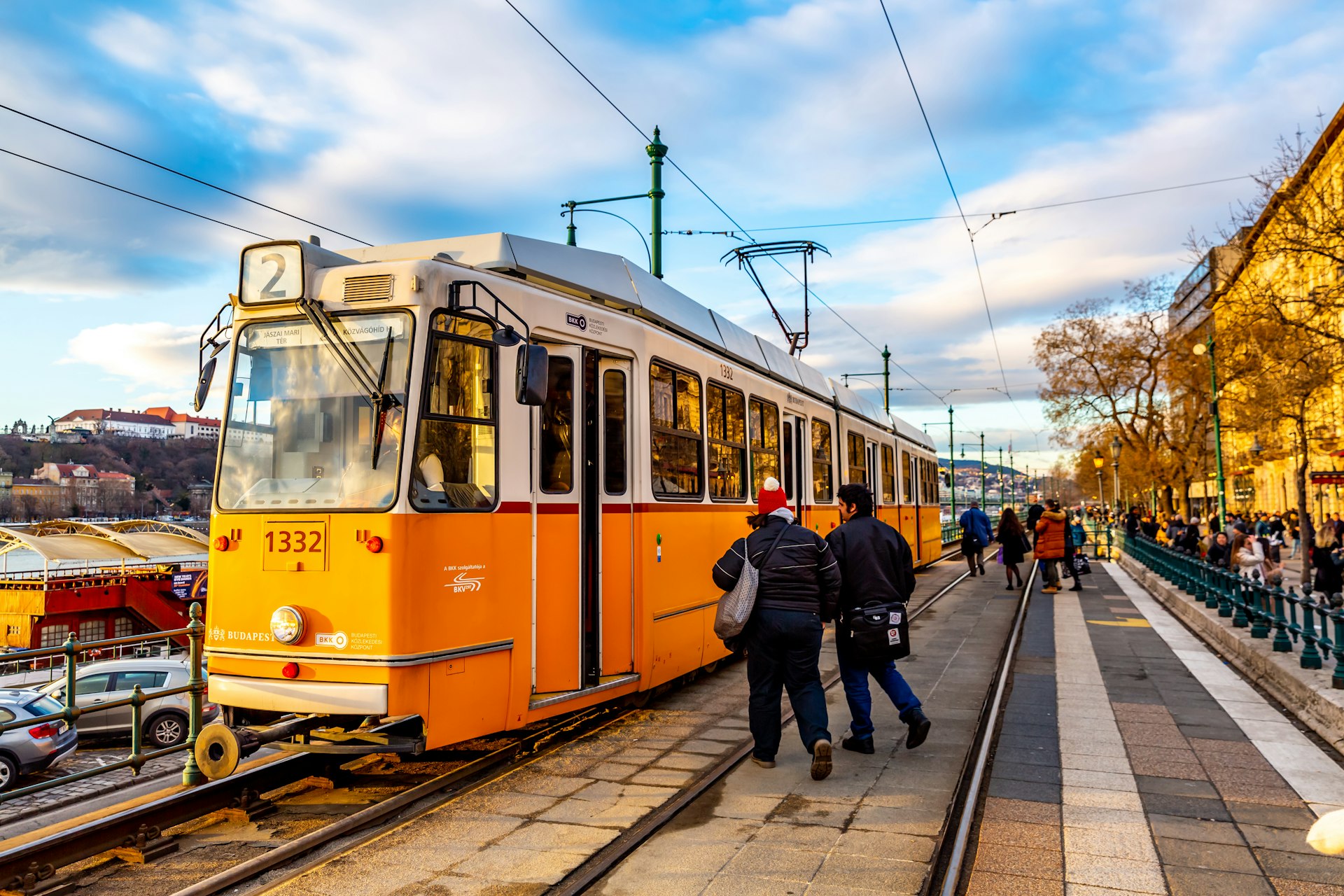
Budapest's trams offer great city views
The tram network covers most of downtown Pest and Buda and extends out into the suburbs. Trams are quick, easy to use and usually much faster than buses – and you also get to see some of this famously beautiful city as you travel, unlike riding the metro underground.
Tram 2 is one of the most beautiful tram routes in Europe, skirting the Danube banks on the Pest side of the river and rattling by the Hungarian Parliament with views of Castle Hill on the other side of the river. Trams 4 and 6 link Buda and Pest from Petőfi Bridge to Margit Bridge, crossing the Grand Boulevard in Pest.
Take the bus for good connections to the suburbs
Buses and electric trolleybuses cover the city all the way to the outer suburbs. The regular blue buses that run all over the city are a good option if you want to go up to the Buda Hills or the Castle District. Buses 16 and 16A bus will deliver you to the castle, while buses 21 and 21A go to Normafa – the highest part of the city, popular for its parks and hiking trails. On the Pest side, red trolleybuses link downtown with neighborhoods beyond the Grand Boulevard.
Suburban trains are great for day trips from Budapest
The suburban train network known as HÉV (Helyiérdekű Vasút) is great for day-trippers looking to visit the fascinating small towns just outside of Budapest, such as Szentendre, a picturesque town that was once home to a substantial Serbian community and thriving art colony.
The easiest way to get to Szentendre is to take HÉV H5, which runs from downtown Buda. Other useful lines for travelers include the HÉV H8, which runs to Gödöllő – home to the elegant Baroque Gödöllő Royal Palace – and the HÉV H7 going south to Csepel Island.
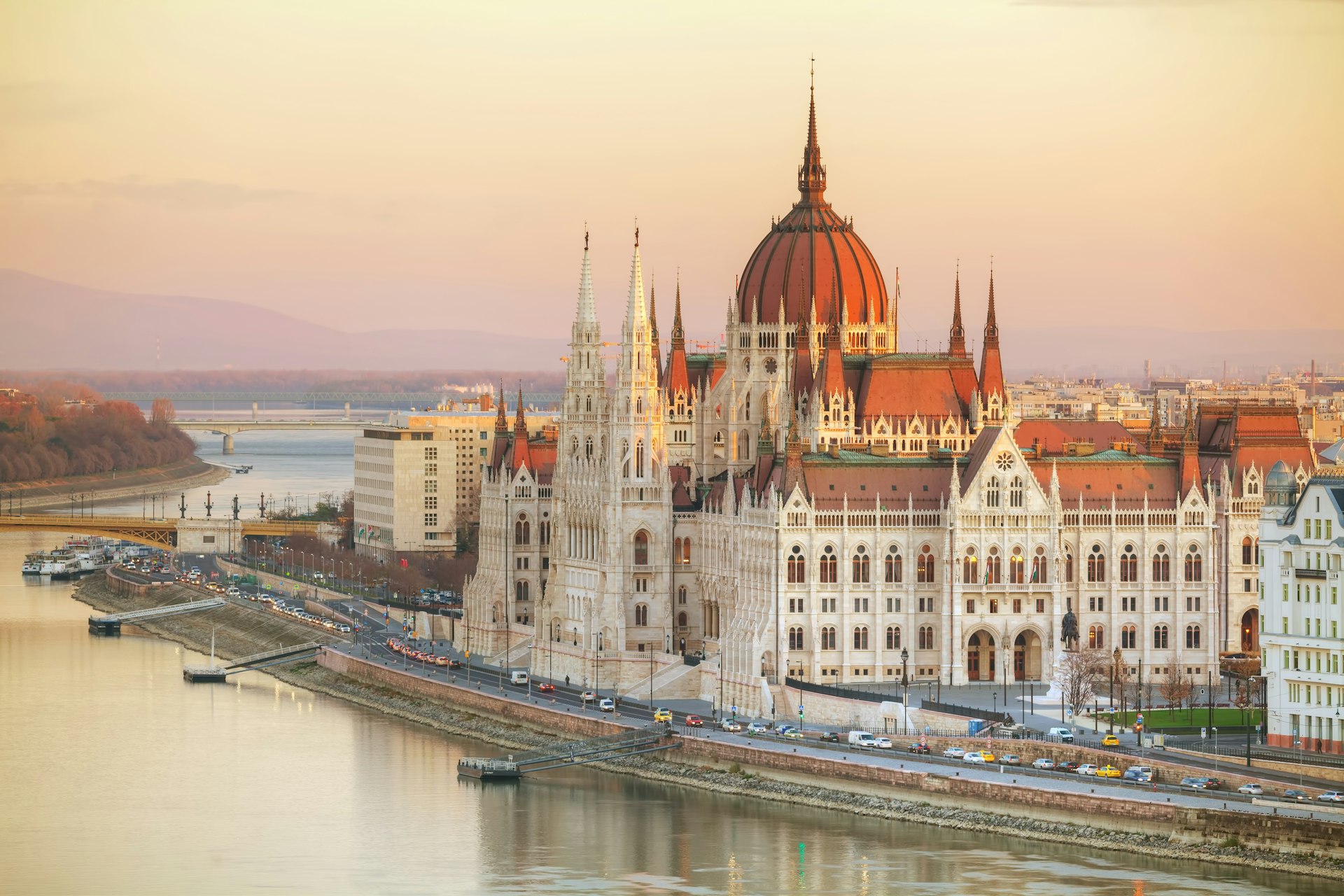
Summertime boats run along the Danube
In the summer months, BKK runs a special boat service along the Danube, connecting various stops on the riverbanks. The ferry can get you to some of the city’s most prominent landmarks, including the Castle Garden Bazaar, the Hungarian Parliament and Margaret Island.
The boat is not the fastest way to travel, but if you want a city tour on a budget, it’s worth the 750 HUF ticket price to enjoy the city from the water. Additionally, shorter ferry trips cost 170 HUF for a single ticket. Check that the service is running before heading to the riverbanks because it can be erratic.
Ride-sharing apps are handy for late-night rides
If you need to get back to your hotel late at night and prefer to avoid the gamble of taking a cab on the street, download the Bolt app (formerly known as Taxify). It works the same way as Uber (which no longer operates in Hungary), and you can get a ride in a matter of minutes in most parts of the city.
Use reputable taxi firms to get around Budapest at night
Conventional taxis are commonplace in Budapest, but it’s best to use a reputable taxi firm such as City Taxi, Főtaxi, 6x6 Taxi or TaxiPlus. Don’t flag down a cab on the street because there are some unsavory taxi drivers – although there are fewer of these characters nowadays than there were in the past. You can easily order a cab by phone or via the companies' apps, or most restaurants and hotels will happily order a cab for you.
A rental car is only really useful for day trips out of Budapest
It’s not really worth renting a car in Budapest unless you plan to take long-distance day trips out of the city. Big international rental-car companies, such as Hertz and Avis, have offices in some large hotels and at the airport.
Accessible transportation in Budapest
Accessible transportation in Budapest has improved in recent years, but there’s still a long way to go. Metro Line 4 is wheelchair-accessible across the entire route, but the older metro lines only have a few stops with elevators and wheelchair access.
Tram lines 4 and 6 are step-free and accessible for wheelchairs, but many other tram lines have quite a few steps between the street and the tram. Travelers in wheelchairs can use most buses, and drivers will lower the bus and extend a ramp. HÉV trains are old and have steep steps that are challenging even for those without mobility issues.
The BKK website has a guide to accessibility on Budapest’s public transport. For more information on accessible travel, see Lonely Planet's accessible travel resources.


